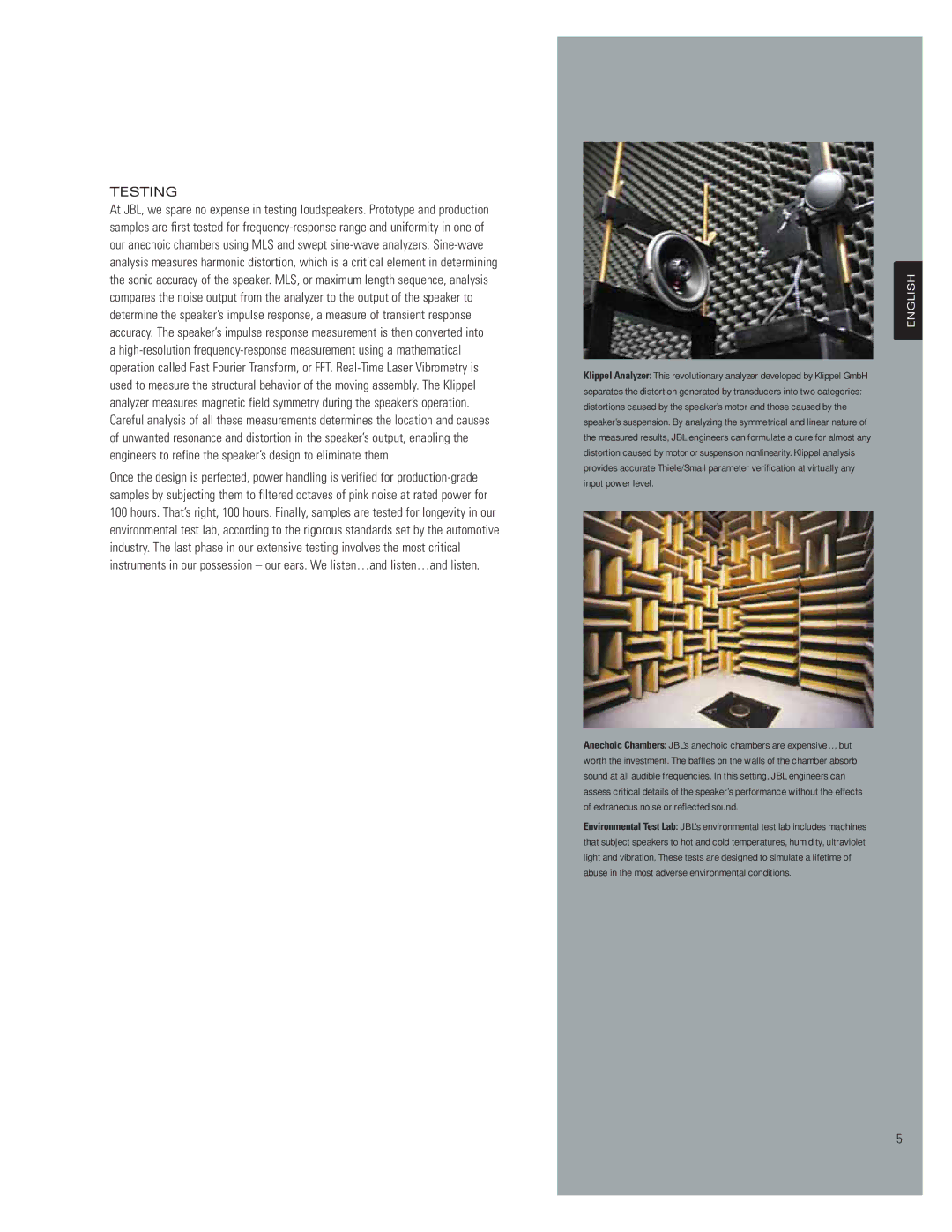TESTING
At JBL, we spare no expense in testing loudspeakers. Prototype and production samples are first tested for frequency-response range and uniformity in one of our anechoic chambers using MLS and swept sine-wave analyzers. Sine-wave analysis measures harmonic distortion, which is a critical element in determining the sonic accuracy of the speaker. MLS, or maximum length sequence, analysis compares the noise output from the analyzer to the output of the speaker to determine the speaker’s impulse response, a measure of transient response accuracy. The speaker’s impulse response measurement is then converted into a high-resolution frequency-response measurement using a mathematical operation called Fast Fourier Transform, or FFT. Real-Time Laser Vibrometry is used to measure the structural behavior of the moving assembly. The Klippel analyzer measures magnetic field symmetry during the speaker’s operation. Careful analysis of all these measurements determines the location and causes of unwanted resonance and distortion in the speaker’s output, enabling the engineers to refine the speaker’s design to eliminate them.
Once the design is perfected, power handling is verified for production-grade samples by subjecting them to filtered octaves of pink noise at rated power for 100 hours. That’s right, 100 hours. Finally, samples are tested for longevity in our environmental test lab, according to the rigorous standards set by the automotive industry. The last phase in our extensive testing involves the most critical instruments in our possession – our ears. We listen…and listen…and listen.
ENGLISH
Klippel Analyzer: This revolutionary analyzer developed by Klippel GmbH separates the distortion generated by transducers into two categories: distortions caused by the speaker’s motor and those caused by the speaker’s suspension. By analyzing the symmetrical and linear nature of the measured results, JBL engineers can formulate a cure for almost any distortion caused by motor or suspension nonlinearity. Klippel analysis provides accurate Thiele/Small parameter verification at virtually any input power level.
Anechoic Chambers: JBL’s anechoic chambers are expensive…but worth the investment. The baffles on the walls of the chamber absorb sound at all audible frequencies. In this setting, JBL engineers can assess critical details of the speaker’s performance without the effects of extraneous noise or reflected sound.
Environmental Test Lab: JBL’s environmental test lab includes machines that subject speakers to hot and cold temperatures, humidity, ultraviolet light and vibration. These tests are designed to simulate a lifetime of abuse in the most adverse environmental conditions.

